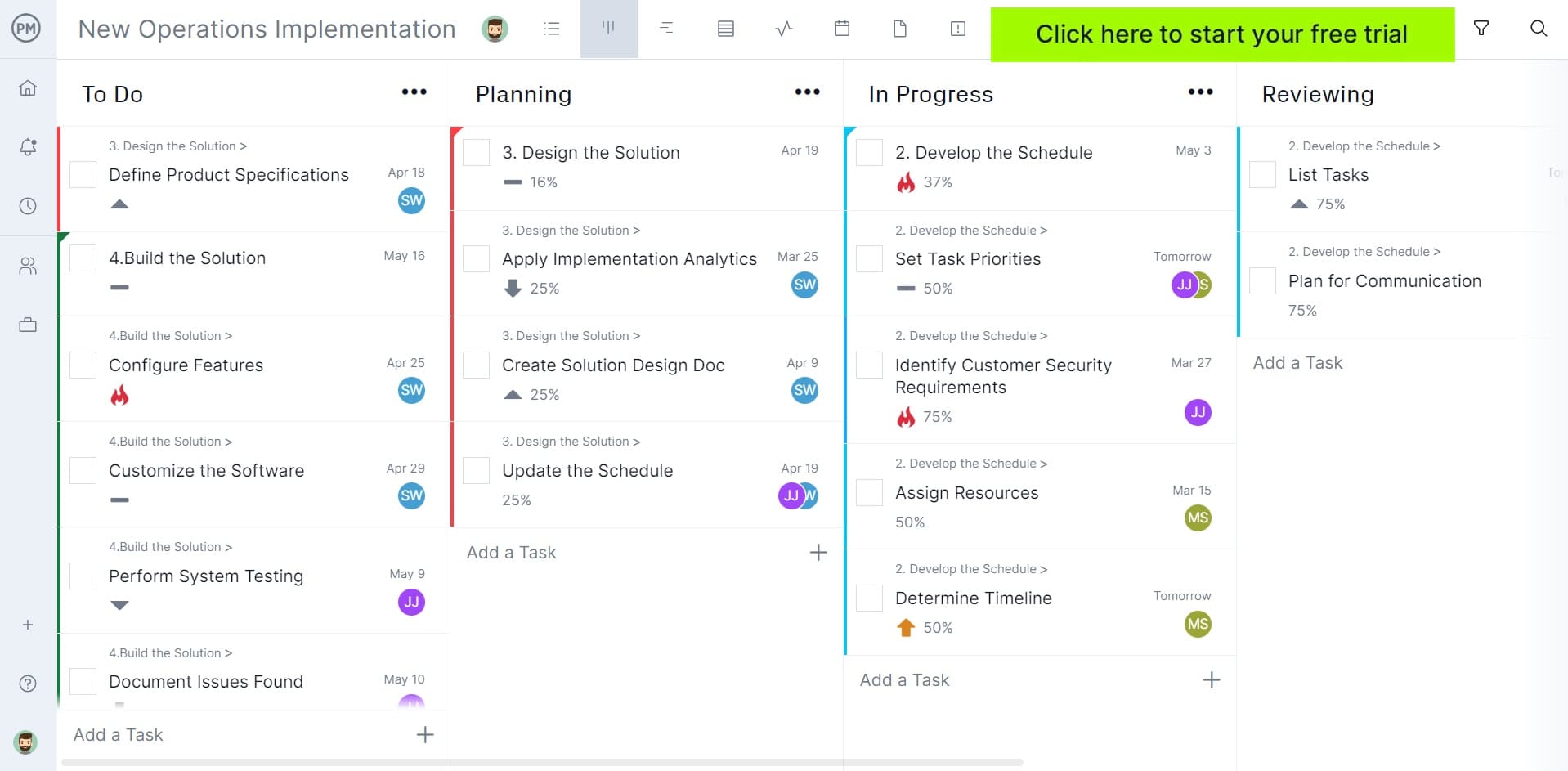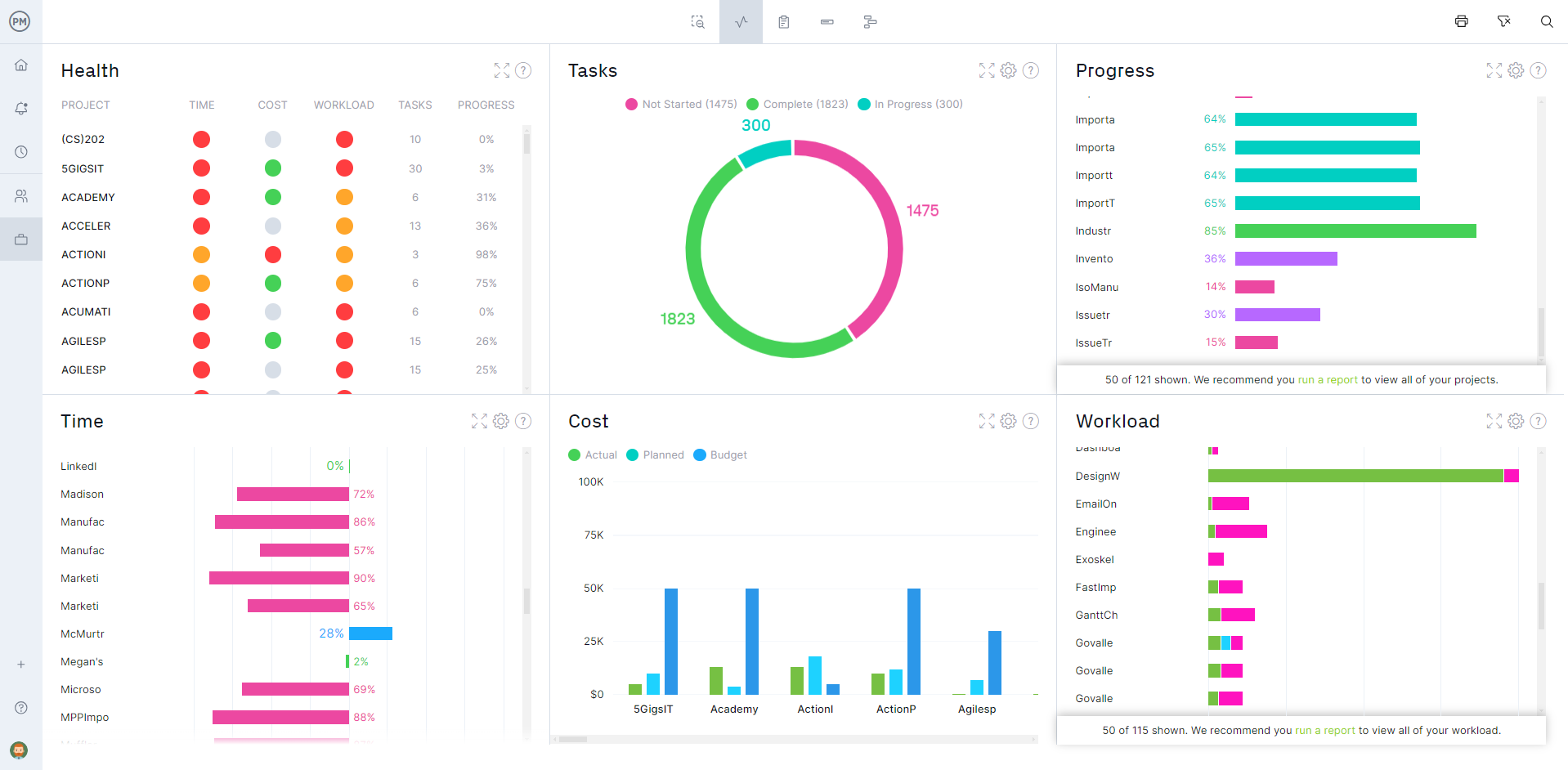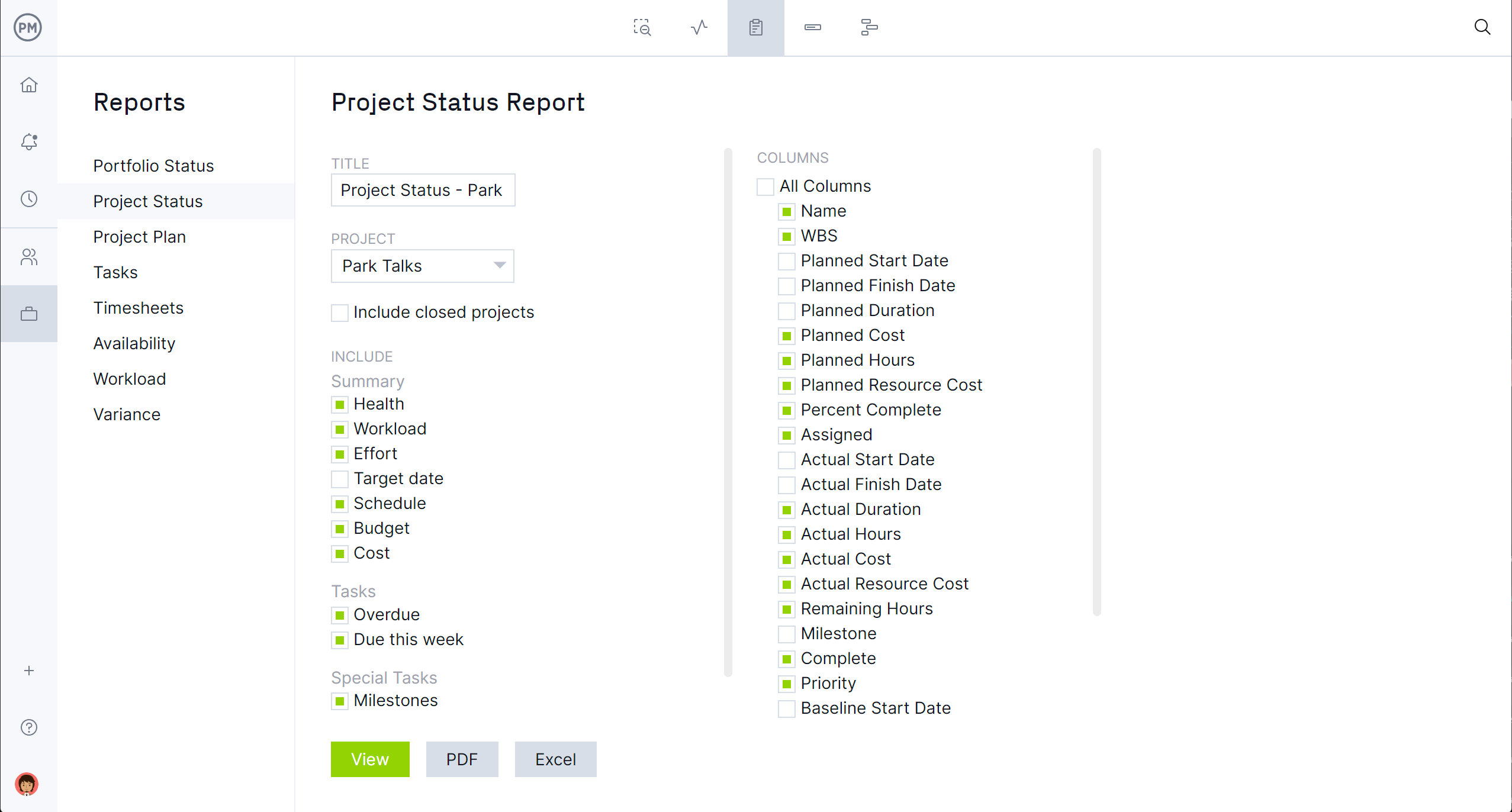When working in an agile or scrum environment, teams plan their work by creating a product backlog, a document that lists all the activities and deliverables that must be done to complete a project.
Then, once a product backlog has been created, teams execute work in sprints, a short period of time from one to four weeks. Because of their short length, agile teams need to constantly prioritize the tasks defined in the product backlog through a process known as backlog refinement, or backlog grooming.
What Is Backlog Refinement?
Backlog refinement is the process of identifying and prioritizing the most critical product backlog items for an upcoming sprint, which is done by having a meeting among the development team, product owner, scrum master and other stakeholders where they review a set of backlog refinement criteria to identify and prioritize tasks, often referred to as user stories in agile frameworks.
Product backlog refinement is not a one-time endeavor, but an ongoing process between the product owner and the development team. It’s a place where they can collaborate to make sure the product backlog is clean and orderly.
That can mean removing outdated user stories and tasks, adding new user stories that come from newly discovered insights or breaking larger user stories into smaller ones. You might reorder the user stories on your backlog, or better describe them to avoid issues later. Assignments and estimates might change and you can identify and remove roadblocks if possible.
Project management software can capture this product backlog refinement meeting and represent the workflow visually on a kanban board. ProjectManager is online project management software that has dynamic kanban boards that have custom workflows and task approval to set who has authority to approve and move tasks forward. And all this is done in real time which is collaborative to the core. Get started with ProjectManager today for free!

You could look at backlog refinement as a means to a mutual understanding between the product owner and the scrum team. This understanding is focused on the product, of course, and what it will or won’t do. Then, you decide the amount of effort necessary to implement, as well as the order to do it.
Backlog Refinement vs. Backlog Grooming
The terms backlog refinement and backlog grooming refer to the exact same process. The difference between them is the term “backlog grooming” was originally used in the agile and scrum community, but it was replaced with “backlog refinement” due to concerns about unintended meanings and confusion brought by the former term. So even though “backlog grooming” might still be used informally, “backlog refinement” is now the official term encouraged by current agile and scrum best practices.
How to Conduct a Backlog Refinement Meeting
To better understand the concept of backlog refinement or backlog grooming, let’s define the main steps in a backlog refinement meeting.
1. Review Existing Backlog Items
The first step in any backlog refinement meeting is to review the current product backlog items to determine whether they’re still relevant or not for the upcoming agile sprint. To do so, the agile team goes over the following backlog refinement criteria.
- Strategic Alignment: Each backlog item should support the product vision and business objectives. Aligning tasks with strategy ensures the team works on high-impact features. If an item no longer fits strategic goals, consider modifying, deprioritizing or removing it to maintain a focused and effective backlog.
- Required Effort: Estimating effort helps the team understand workload distribution and sprint feasibility. Using techniques like story points or T-shirt sizing, teams gauge how much work is needed. Accurate effort assessment prevents overcommitment, balances workloads and improves predictability in sprint planning.
- Business Value: Every backlog item should deliver meaningful value to users or the business. Prioritization should favor high-impact product features or project deliverables that enhance user experience, drive revenue or improve efficiency. Regularly reassessing business value ensures the backlog remains relevant and aligned with customer and stakeholder needs.
- Acceptance Criteria: Well-defined acceptance criteria clarify when a task is considered “done.” These criteria help developers, testers and stakeholders align on expectations, reducing ambiguity. Clear, testable acceptance conditions improve quality, streamline development and prevent unnecessary rework.
- Technical Feasibility: Assessing feasibility ensures backlog items are realistically achievable within technical constraints. This includes evaluating system limitations, required integrations and potential technical debt. Early feasibility checks help teams mitigate risks and identify necessary architectural decisions before development begins.
- Size and Scope: Backlog items should be small enough to complete within a sprint but still provide value. Large epics should be broken into smaller, manageable stories. Right-sizing backlog items enables efficient development, easier estimation and clearer progress tracking.
- Dependencies: Identifying dependencies between tasks, teams or external systems prevents bottlenecks. Dependencies should be addressed early to avoid delays and conflicts. Mapping out interdependencies ensures smoother workflows and better coordination between cross-functional teams.
- Risk Assessment: Understanding potential risks associated with backlog items helps teams prepare for obstacles. Risks may include technical challenges, regulatory concerns or changing business priorities. Addressing risks early allows teams to develop mitigation strategies, ensuring projects stay on track.
- Resource Constraints: Every backlog item requires resources such as time, budget and personnel. Evaluating constraints helps teams allocate resources efficiently and avoid overloading team members. Awareness of limitations allows for realistic planning and better decision-making during backlog refinement.
2. Clarify and Break Down Epics, User Stories or Backlog Items
To ensure smooth execution, backlog items must be clear, concise and manageable. Large epics should be broken into smaller user stories that can be completed within a sprint. Refining details such as scope, dependencies and expected outcomes helps the team understand requirements, align on priorities, and estimate effort more accurately.
3. Add New Backlog Items (If Necessary)
As business needs evolve, new backlog items may emerge. This step involves identifying and adding relevant user stories, technical improvements or bug fixes. Ensuring that new items align with strategic goals and are well-defined prevents last-minute surprises and keeps the product backlog dynamic and responsive to changing priorities.
4. Identify Risks
Proactively identifying risks helps the team mitigate potential blockers before they become major issues. Risks can include technical challenges, resource limitations, dependencies or shifting business priorities. By assessing and addressing risks early, the team improves predictability, reduces uncertainties and ensures backlog items remain feasible within the sprint timeline.
5. Prioritize Backlog Items
Not all backlog items hold equal value, so prioritization is key. This step ensures the most impactful, high-value items are addressed first. Using techniques like MoSCoW, weighted shortest job first (WSJF) or stakeholder input, teams determine what should be tackled in upcoming sprints to maximize efficiency and business impact.
6. Eliminate Unnecessary Backlog Items
A cluttered backlog slows down decision-making. Regularly reviewing and removing outdated, low-value or duplicate items keeps the backlog lean and manageable. If an item no longer aligns with business objectives or has become irrelevant, it should be archived or deprioritized to maintain a clear and focused development roadmap.
7. Confirm Readiness for Sprint Planning
The final step ensures backlog items are properly refined and ready for sprint planning. This includes verifying that acceptance criteria, dependencies and effort estimates are complete. By ensuring all items meet the “definition of ready,” teams can transition smoothly into sprint planning without additional clarification, improving sprint execution and velocity.
8. Incorporate Stakeholder Feedback
Backlog refinement isn’t just an internal team process—it benefits from stakeholder input. Engaging product owners, business leaders, or end users ensures that backlog items align with real business needs and user expectations. Gathering feedback early helps refine priorities, clarify requirements and prevent costly rework, ultimately leading to a more valuable and customer-focused product.
Who Participates in the Backlog Refinement Meeting?
A backlog refinement meeting usually begins with the product owner showing the scrum or agile development team what product backlog items need refinement. This opens up a discussion between the product owner and the scrum team, which is moderated by the scrum master.
Having said this, let’s explore the role and responsibilities of each of these participants in more detail.
Product Owner
The product owner leads the backlog refinement meeting by ensuring the backlog items are well-defined, prioritized and aligned with business goals. They clarify any uncertainties, make decisions on item priorities and ensure that the team understands the vision and objectives behind each item. The product owner also manages scope changes and adjusts priorities as needed.
Scrum Master
The scrum master facilitates the backlog refinement meeting, ensuring that it follows scrum practices and stays on track. They help the team maintain focus, resolve any process issues and encourage open communication. The scrum master removes any obstacles that might impede the team’s understanding of backlog items and ensures that the meeting environment supports collaboration.
Development Team
The development team actively participates in the backlog refinement meeting by providing technical insights and effort estimates for each backlog item. They help clarify requirements, identify dependencies and discuss potential challenges or risks. The team ensures that the backlog items are actionable, feasible and well-understood, enabling smooth planning for upcoming sprints.
Sample Backlog Refinement Agenda
Here’s a sample backlog refinement agenda that can help agile teams plan their agile sprints.
- Introduction and objective setting (five minutes): The meeting begins with a brief introduction and setting clear objectives for the session.
- Review current backlog (15 minutes): The team analyzes the existing backlog, removing outdated or irrelevant items.
- Prioritization (20 minutes): Re-prioritize backlog items based on project goals and current business objectives.
- New item introduction (15 minutes): Discuss and add new items to the backlog, ensuring they align with project needs.
- User story review and clarification (10 minutes): Examine user stories, clarify requirements, and ensure they are well-defined.
- Effort estimation (10 minutes): The development team provides estimates for the effort required to complete each item
- Risk assessment (five minutes): Identify and discuss any potential risks or concerns related to upcoming tasks.
- Backlog cleaning (five minutes): Remove unnecessary items and split larger tasks into smaller, manageable pieces
- Next steps and action items (five minutes): Summarize decisions made and outline action items for team members.
Backlog Refinement vs. Sprint Planning
Because backlog refinement is done before sprint planning meetings, they can often be confused with each other, but they’re two different processes.
Backlog refinement involves reviewing and revising the product backlog to ensure items are well-defined, prioritized and ready for future sprints. This process involves the whole team in clarifying and estimating backlog items, but it’s not tied to a specific sprint.
When planning a sprint, the scrum team is working on the priority items from the backlog and focusing on further detailed clarification, lightweight modeling, re-estimation, creating a sprint goal and sprint backlog.
Benefits of Backlog Refinement
Backlog refinement is a crucial ongoing activity that ensures the product backlog remains well-organized, prioritized and ready for sprint planning. Regular refinement improves team efficiency and enhances project collaboration. Here are some key benefits:
- Improved Clarity: Ensures backlog items are well-defined and understood by the team.
- Better Prioritization: Aligns backlog items with business goals, making sure the most valuable items are worked on first.
- Enhanced Estimation: Provides the team with an opportunity to estimate effort, ensuring more accurate sprint planning.
- Increased Efficiency: Helps identify dependencies, blockers and risks early, minimizing surprises during sprints.
- Stronger Collaboration: Encourages communication between the product owner, development team and scrum master, fostering team alignment.
Backlog Refinement Techniques
Backlog refinement is essential for maintaining an organized and prioritized product backlog. Best practices ensure the backlog is continuously prepared for successful sprint planning. These practices help teams clarify requirements, improve prioritization and ensure tasks are manageable, leading to smoother project execution and better alignment with business goals.
WSJF (Weighted Shortest Job First)
WSJF is a prioritization technique used to calculate the value of backlog items by comparing their cost of delay with their job size. This helps prioritize tasks that deliver the highest value in the shortest time. It encourages focusing on high-value, low-effort tasks first, optimizing both time and resources for maximum impact.
Kano Model
The Kano Model is a prioritization tool that categorizes features based on stakeholder engagement. It helps teams identify which features will delight customers, meet basic needs or provide little to no impact. This model allows product owners to make informed decisions about which features will drive the most customer value, guiding prioritization in backlog refinement.
MoSCoW Prioritization
MoSCoW prioritization is a technique for categorizing backlog items into four groups: must-have, should-have, could-have and won’t-have. This method helps teams focus on delivering the most critical features first while ensuring less important tasks are addressed later. MoSCoW is particularly useful for balancing stakeholder demands and optimizing resource allocation in a project.
DEEP Criteria
By having a product backlog refinement process you create an outcome that is DEEP, which is an acronym that was made up by Roman Pichler, a product management expert who specializes in digital products and agile practices.
DEEP stands for detailed, emergent, estimated and prioritized. You want more detail for the user stories in your backlog. The adding, changing or removing of items will lead to new insights. Each item on the backlog is estimated and prioritized.
INVEST Criteria
The INVEST criteria is a framework for writing clear and actionable user stories. It stands for independent, negotiable, valuable, estimable, small and testable. By ensuring user stories meet these criteria, teams can make sure the work is clear, achievable and aligned with project goals. This practice enhances backlog refinement by making backlog items well-defined and ready for development.
How ProjectManager Helps With Product Backlog Refinement
ProjectManager is cloud-based work management for hybrid teams that are collaborative to the core and provides a single source of truth that keeps everyone on the product team on the same page. Real-time data helps you make more insightful decisions when in a backlog refinement meeting, which leads to more successful sprints.
Multiple Project Views
Kanban boards are the preferred tool when managing a backlog, but that can be done on a task list, too. People work differently and our tool is designed to accommodate various work styles with multiple project views. Other departments might use the Gantt chart, sheet or calendar to track the project. No matter which view they’re using, the data they’re seeing is current and in real time to keep everyone on the same page.

Get Real-Time Data with Dashboards
Every project view feeds automatically into the live dashboard, which doesn’t require any time-consuming setup as you’ll find in other software. The real-time dashboard captures data and automatically calculates the information to display it in easy-to-read graphs and charts. The product owner can view six project metrics whenever they want to monitor the sprint and remove any roadblocks they find.

Generate Timely Reports
One-click reporting goes deeper into the data and helps the product owner make insightful decisions. Reports on time, tasks and more can all be filtered to show only what you want to see. Then they can be saved as a PDF or printed out and shared with stakeholders to keep them updated on progress.

Email notifications are automatically triggered whenever team members make a comment or an item on the backlog is updated. But you also have in-app alerts so you don’t have to leave your tool to stay updated. This keeps you working on your sprint and adjusting it according to the most current data, which boosts productivity.
ProjectManager is an award-winning project management software that connects scrum teams as well as everyone else in the organization. It’s one tool that works in an agile, traditional and hybrid environment to keep everyone working together regardless of where they are or how they work. Join the 35,000-plus users at NASA, Siemens and Nestles who are already delivering success with our tool. Get started today for free!

